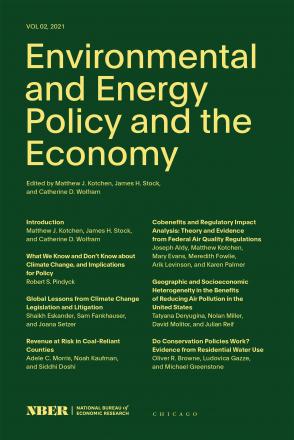Geographic and Socioeconomic Heterogeneity in the Benefits of Reducing Air Pollution in the United States

You may be able to download this chapter for free via the Document Object Identifier.
Policies aimed at reducing the harmful effects of air pollution exposure typically focus on areas with high levels of pollution. However, if a population’s vulnerability to air pollution is imperfectly correlated with current pollution levels, then this approach to air quality regulation may not efficiently target pollution reduction efforts. We examine the geographic and socioeconomic determinants of vulnerability to dying from acute exposure to fine particulate matter (PM2.5) pollution. We find that there is substantial local and regional variability in the share of individuals who are vulnerable to pollution both at the county and ZIP code level. Vulnerability tends to be negatively related to health and socioeconomic status. Surprisingly, we find that vulnerability is also negatively related to an area’s average PM2.5 pollution level, suggesting that basing air quality regulation only on current pollution levels may fail to effectively target regions with the most to gain by reducing exposure.


